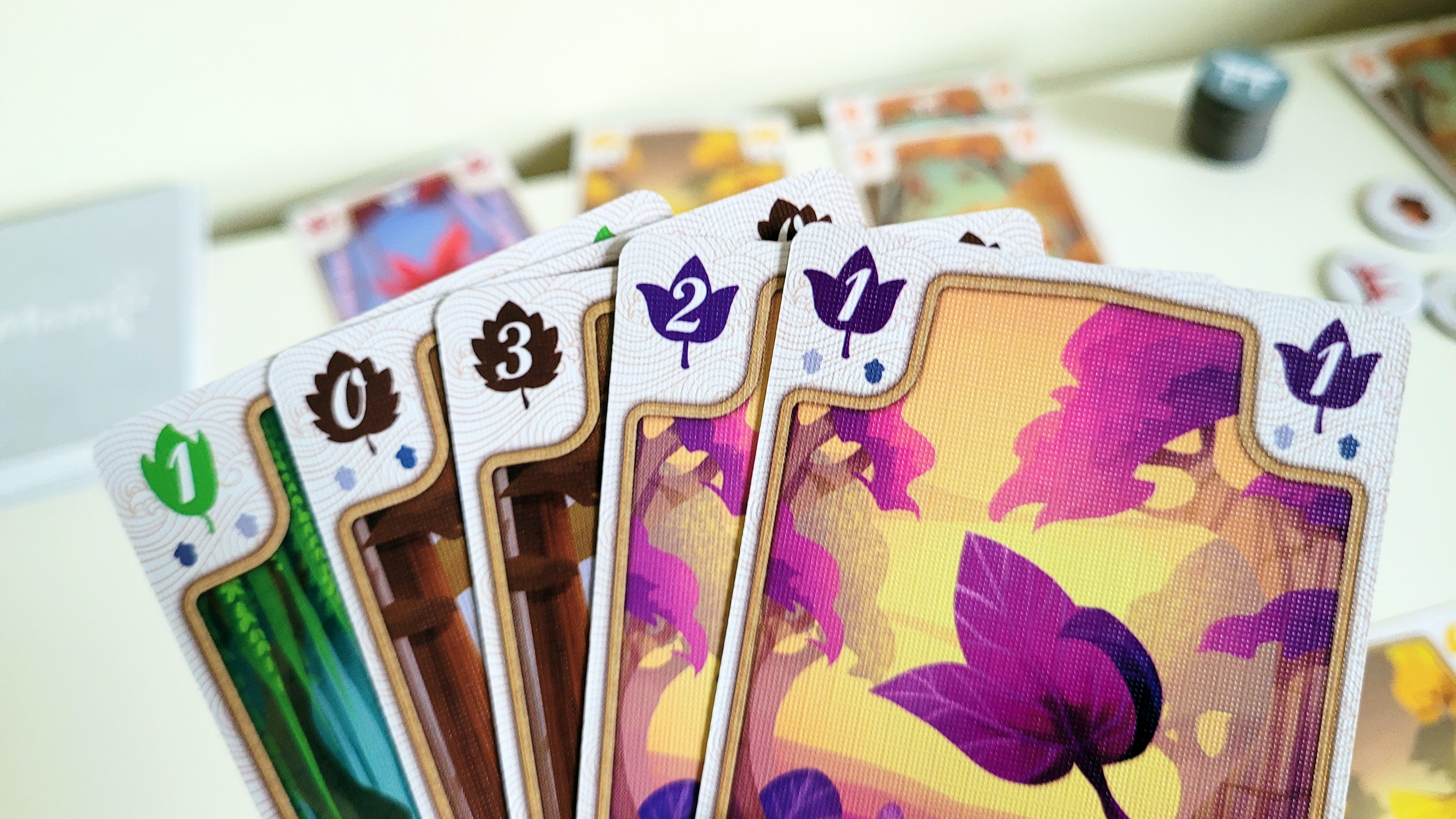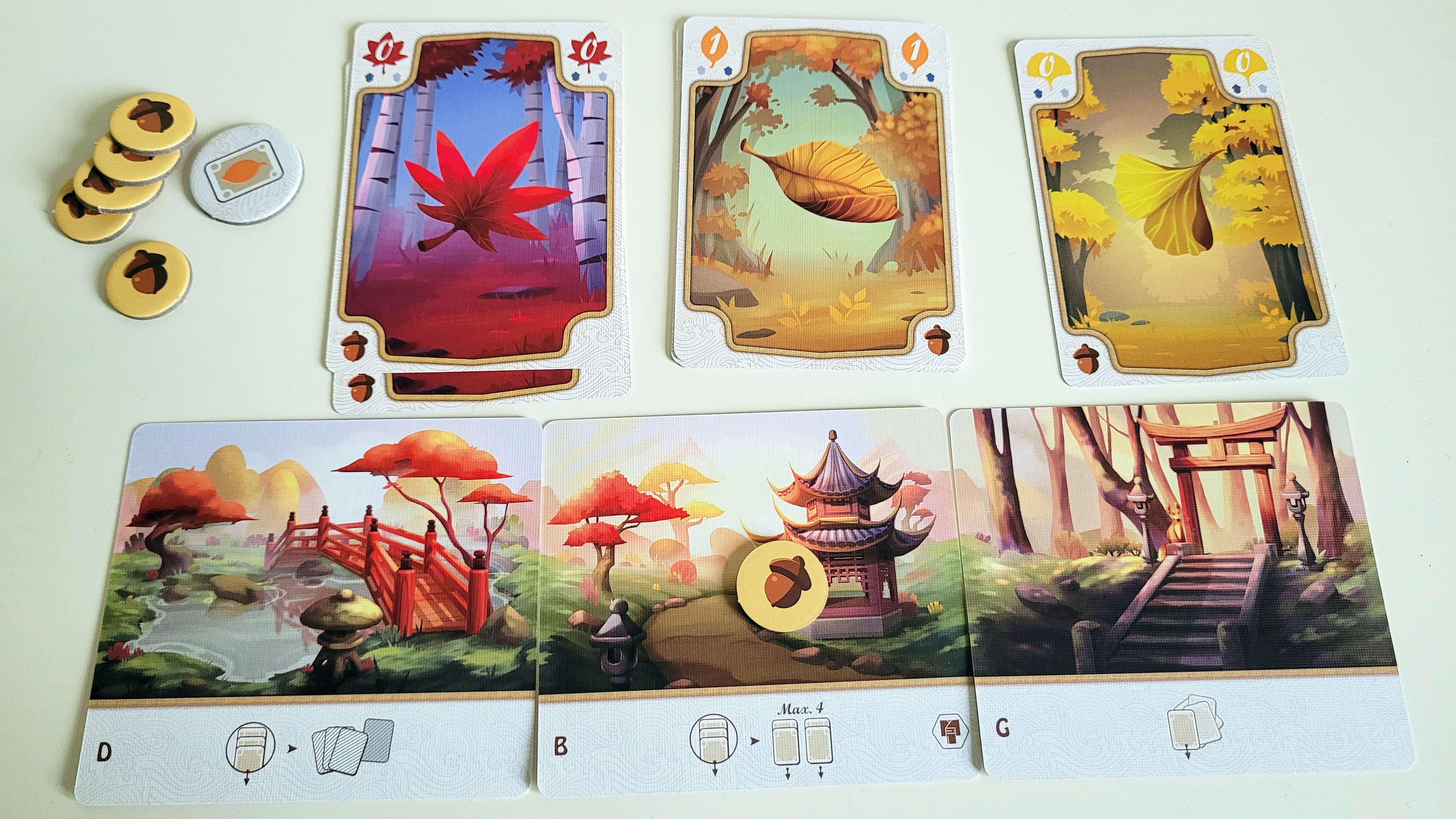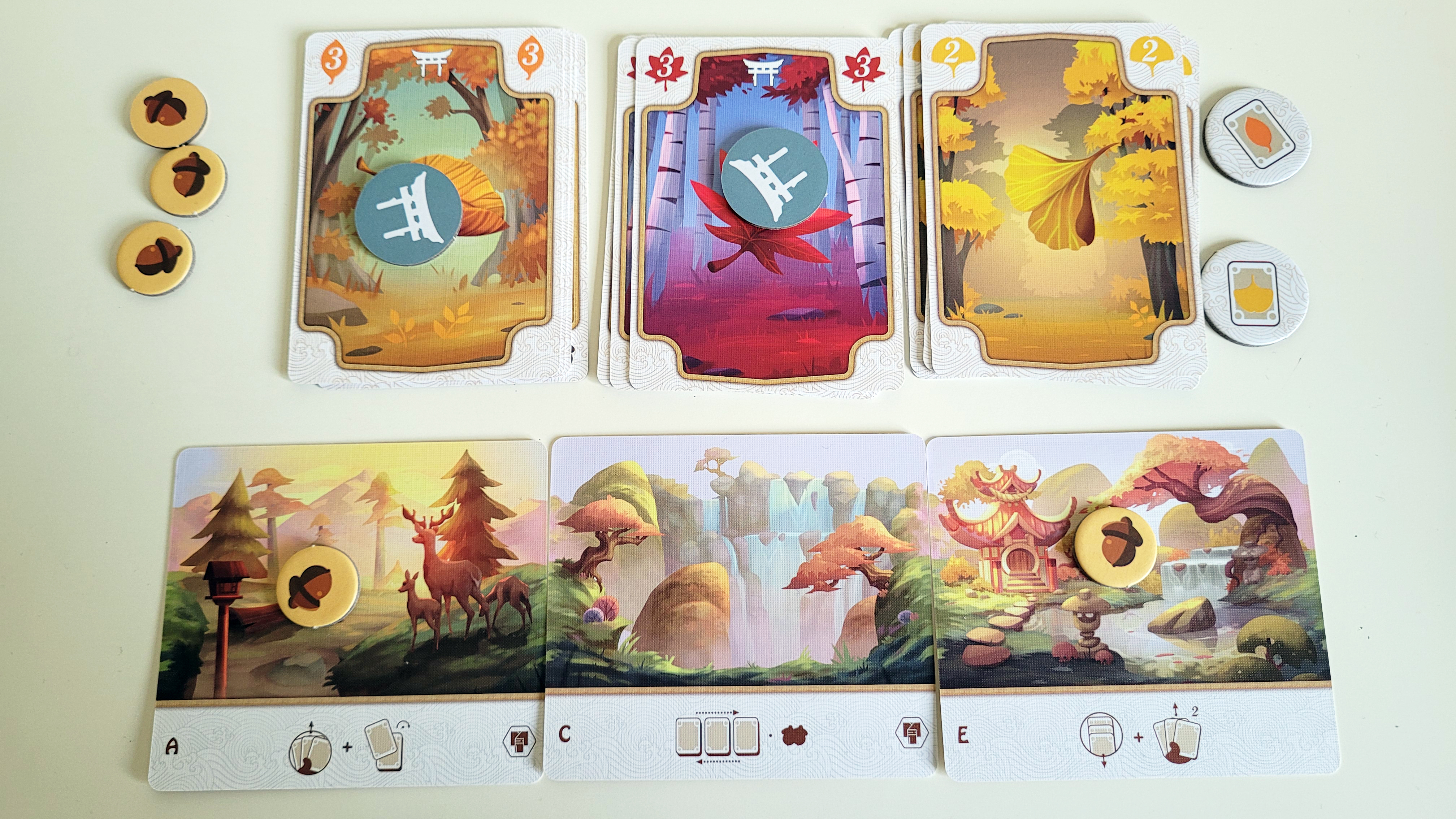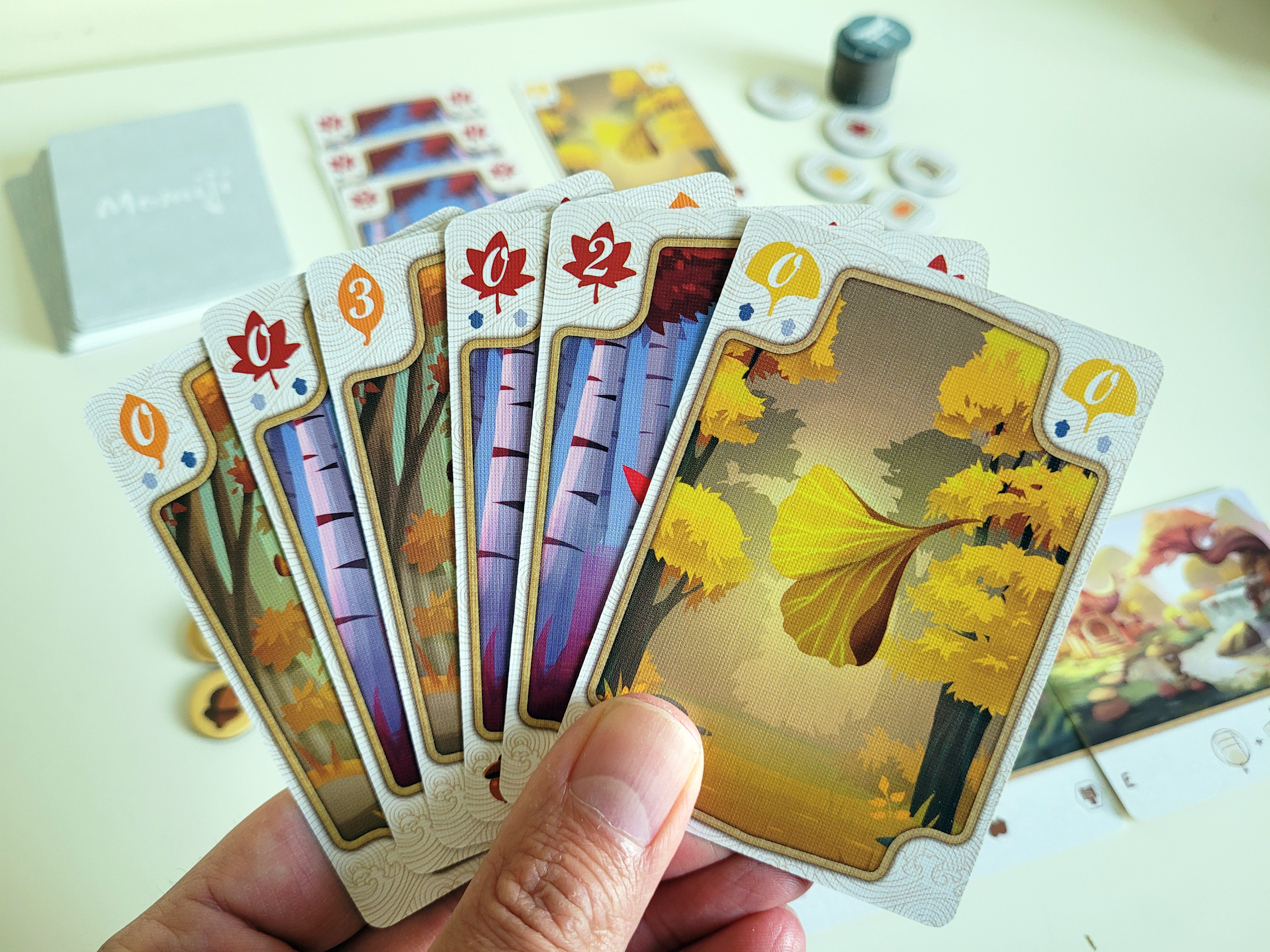Momiji review
Is Momiji the ultimate Japan-inspired board game? Find out in T3's official review

Momiji is a fun, good-looking game that while a bit repetitive, succeeds thanks to its ever-shifting game state and surprising swings.
-
+
A challenging and varied game in a small, affordable package
-
+
Lovely leaf and landscape art
-
+
Clever gotchas in every aspect of play
-
-
Difficult decisions may be a bit much for family play
-
-
Relies on common set collection concepts that may feel over-familiar
-
-
Poor solo mode and confusing iconography
Why you can trust T3

In Japanese, Momiji is one of those words with an oddly specific definition: maple leaves reddening in the autumnal fall. The beauty of the shaded leaves is a cause for celebration in Japan, and this game invites you to share in it as you collect coloured leaves in the Imperial Garden. In reality, it’s rather more of an abstract card game, but the theme is a great excuse for some very striking visuals.
But, is it one of the best board games to buy and play today? Let's find out.
Momiji review: Price and Who It’s For
Despite the lovely leaf art and relatively accessible rules, Momiji turns out to be quite challenging to play well. There’s a lot to think about during your turns, which marks it as being a bit more of a gamer’s game than family fare. As such, it’s best suited to groups who might want a short but stretching title to fit into their game nights. If that appeals, then it’ll set you back a reasonable £20/$25.

Momiji review: How It Plays
A game of Momiji starts with a selection of random objectives, four face-up leaf cards arranged by colour, and each player with a hand of six leaf cards. Leaves come in different colours and have values between zero and three. On your turn, you can either pick up all the face-up cards of one colour, play some cards from your hand into leaf piles by colour in front of you, or purchase an objective using the game’s currency, acorns.
Your goal is to score the most points. The bulk of these will likely come from your leaf piles, which are worth the number of cards in the pile multiplied by the value of the topmost card. You can also score ten points for fulfilling an objective you’ve bought, such as having the most cards of a given colour or having the fewest played cards. But there’s a catch: if other players also qualify for that objective, they get three points. Buying objectives can thus be a double-edged sword. Not only are you potentially giving other players points, but if you buy too early, you might not even meet it yourself while buying too late may mean you miss out on the pot.
This kind of trap is hidden in all aspects of Momiji’s play, giving it a far more slippery strategy than it first appears. Picking up cards seems like an easy pick if there are leaves there you want, except there’s a strict hand limit, and if you clear the face-up selection the next player gets four new cards to choose from. Playing cards is necessary for points, except you have to lay them in numeric order, and the game rewards you with acorns for laying cards in different colours rather than on the same pile. Every choice you make has a gotcha ready to spring out and bite you on the behind.
As if that didn’t give players enough to think about, players also have three landscape cards, each of which can be activated with an acorn once per game for a special power. This might be to take two colours of leaves instead of one when you pick up cards, or to play additional cards when you add to your piles. There are fourteen different landscape cards, giving a very wide variety of powers to experiment with and ensuring that the challenge is different in every game. However, despite Momiji’s attempts to differentiate itself, set collection is a very common game mechanic and veteran gamers may find its rhythms to be over-familiar.

Both landscape and leaves took incredible on the table. They’re only cards but the art is stylish and vibrant, rich with autumnal colours and scenes. It’s a pleasure to see the game spread out as players increase their piles. The iconography, on the other hand, is problematic. Landscape cards and objective tokens only indicate what they do via a set of icons which, for the most part, is fairly obtuse. Expect a lot of rulebook referencing until you begin to learn them by familiarity. It’s a shame there wasn’t a player aid included for this.
Nevertheless, Momiji delivers a lot of interesting game-play moments as you’re internalising its icons. You’re constantly challenged to balance the desire to collect cards to help you build up to powerful plays with the need to empty your hand to accommodate more cards. Taking turns to buy objectives is both expensive and risks losing the tempo of picking up or playing cards. There’s a strong timing element that comes through with practice, learning when it’s risky to take cards or an objective. At the same time, there can’t help but be a fair amount of randomness when just the right cards are available on your turn for you to grab.
There’s a solo mode, too, which sets down three scenarios of increasing difficulty to conquer. Except there’s a misprint, and the supposed easiest one is actually the hardest. Played solitaire you’re trying to complete the scenario objectives using the normal rules, except that picking up cards or buying objectives clears the face-up cards, making you deal more. This runs the deck down very quickly and forces you into some tough decisions to try and meet the win conditions in time. Nevertheless, it feels like an afterthought, with a high random factor whereby you’re often forced to discard the cards you need.

Momiji review: Verdict
Momiji is a good and good-looking game that tries hard to differentiate itself from the rash of similar set collection games that abound in the modern market. While it can feel repetitive, it succeeds for the most part, presenting a fun puzzle with a decent amount of variety and an ever-shifting game state that can throw up some surprising swings.
Momiji review: Also consider
Given that there are a lot of set collection games around, the obvious place to look for alternatives is in the well-worn classics of the genre. You may have heard of the Ticket to Ride series, a crossover smash hit that sees players using Rummy-like mechanics to claim rail routes across a map. There are also 7 Wonders and 7 Wonders Duel which feature card drafting, passing a selection of cards from player to player, picking one each time, to build up sets that represent aspects of a developing civilization. All these games are great for family play although they take slightly longer than Momiji does.
If you want a closer fit, in terms of a short, strategic card game with lovely art, there are still plenty of good contenders. Stellar is perhaps the closest, where players build a shaped tableau of beautiful cards depicting the night sky. Closer to earth is Canopy which involves a novel form of blind card drafting to collect sets representing a rainforest ecosystem. Both, unlike Momiji, are best with two players although will support more.
Sign up to the T3 newsletter for smarter living straight to your inbox
Get all the latest news, reviews, deals and buying guides on gorgeous tech, home and active products from the T3 experts
Matt has been writing about and reviewing tabletop games professionally for over a decade and playing them since he could talk. He's also the author and co-author of three books on the subject. He writes about video games, too, and his other hobbies include hiking and cooking.
-
 Meet Rhea and Theia, the speaker superstars with supercar prices
Meet Rhea and Theia, the speaker superstars with supercar pricesGoldmund's superbly sci-fi speakers are out of this world
By Carrie Marshall Published
-
 "A Polaroid SX-70 in 2025 would cost £2,500", says company exec
"A Polaroid SX-70 in 2025 would cost £2,500", says company execEXCLUSIVE: T3 discusses the reason why the iconic camera hasn't been remade
By Sam Cross Published
-
 Berghaus wants to be your new favourite street-to-summit brand
Berghaus wants to be your new favourite street-to-summit brandThe brand's latest Trail Collection brings the company up to speed with some of the most popular outdoor labels
By Matt Kollat Published